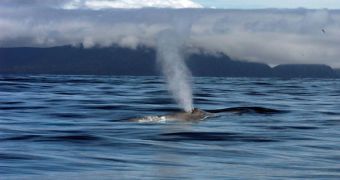The huge diversity in body shapes and sizes that modern-day whales exhibit have always puzzled researchers. They learned some time ago that creatures ranging from porpoises and dolphins to whales shared a common ancestor, but the way in which these types of animals branched out from this early ancestor has remained a mystery until recently. Now, a new piece in this puzzle was solved, when scientists figured out that these animals basically evolved for their precursor with extreme speed.
In fact, the team behind the investigation says, the animals developed and evolved in the blink of an eye, if we take geological times as a reference point. It was reveled that creatures ranging from the 30-meter-long blue whale (the largest living creature to have ever roamed our planet) to some obscure, dog-sized species appeared within less than 5 million years after separating from the early ancestor. Details of this investigation appear in the May 19 issue of the esteemed scientific journal Proceedings of the Royal Society B, LiveScience reports.
“It's as if whales split things up at the beginning and went their separate ways. The distribution of whale body size and diet still correspond to these early splits. Our study is the first to test the idea that evolution in early whales was explosively fast,” says University of California in Los Angeles (UCLA) evolutionary biologist Michael Alfaro, who was also a coauthor of the journal entry. The leader of the research effort, UCLA professor Graham Slater, adds that whale evolution appears to have simply ignited 35 million years ago and that, by 30 million years back, the ancestors of all species that live today already existed. “Five million years is like the blink of an eye,” Slater says.
“[The] variation that we see in modern whales today is the result of partitioning of body sizes early on in their history. Whatever conditions allowed modern whales to persist allowed them to evolve into unique, disparate modes of life, and those niches largely have been maintained throughout most of their history,” Alfaro adds. Scientists have thus far identified no less than 400 extinct species of whales, in addition to the 84 that still live today. They hypothesize that some of the things which allowed for such vast diversity include the development of tightly-knit social behavior, baleens, large brains and sonars.

 14 DAY TRIAL //
14 DAY TRIAL //